I don’t really have any puns for this, but I’d argue that that in itself is a bit of a reflection of the series. In comparison to the other post, this is an actual review on the latest booster and my personal thoughts on the matter.
Rather than reviewing each and every individual card, I think it is better to connect cards together and discuss the impacts of how these cards integrate and mesh with each other to produce a coherent theme. This theme may not be the most impactful gameplay-wise and may also be more of a callback to the series’ own expressive concepts such as character pairings.
For all intents and purposes, before I even dive into the cards themselves, I want to give some insight into the series and how I feel its designs are organized. In the original material, the main character, Shidou, is tasked by others to capture and seal the hearts of celestial beings called <Spirits> that look to endanger humanity. These <Spirits> are all female beings and can be sealed through romantic interactions with the main character. In the Weiss Schwarz expression of this series, Date A Live tries to reflect the powers of each respective character with flavourful effects or conditions.
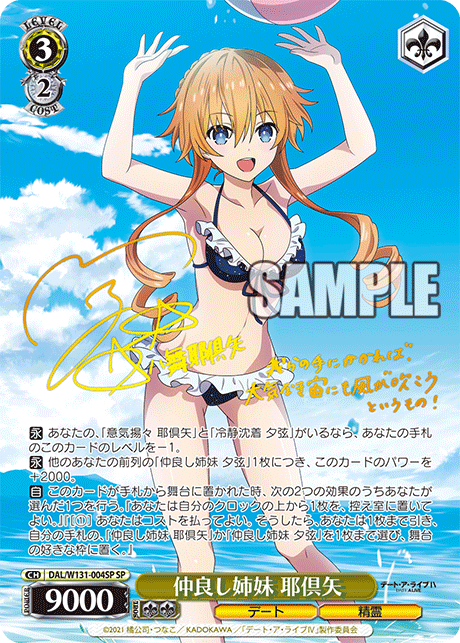
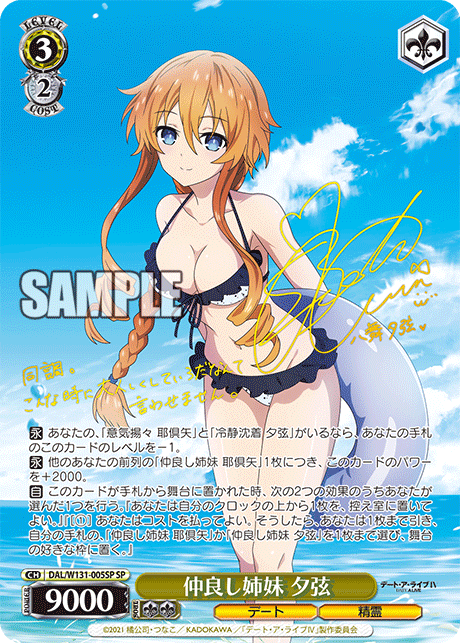
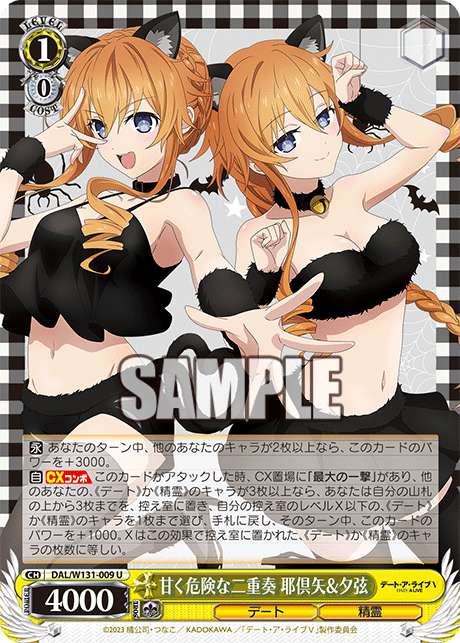
DAL/W131-005SP-SP 仲良し姉妹 夕弦 (center)
DAL/W131-009U 甘く危険な二重奏 耶倶矢&夕弦 (right)
The wind sisters, better known as the Yamai sisters, received a good lot of new additions to potentially build into a pure Yamai deck. In the past, the Yamai sisters were an awkward in-between theme that was missing coherent pieces to turn it into a more modern functioning deck. It had some decent cards, but the problem was that it was missing out on other crucial effects that would have really benefited their build. With the new booster, this seems partially mitigated with some more cards to mainly fill out the early game slots, cards that the theme desperately lacked. With this newest set, they also received an entirely new engine that works to spawn multiple early plays as long as you had both copies of the level zero twins on board. The theme still feels a tad barebone as there isn’t much flexibility in its card pool and some more utility profiles could be wished for. But you can finally build full Yamai while resembling closer to that of a modern deck.
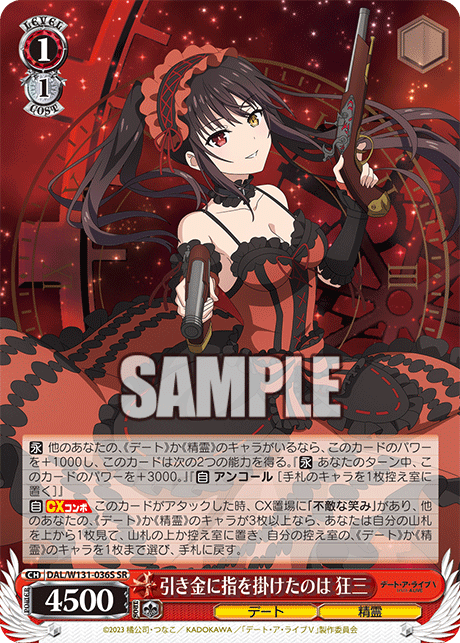
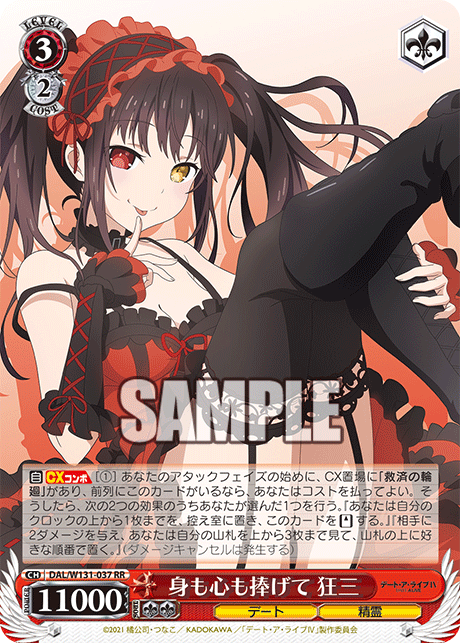
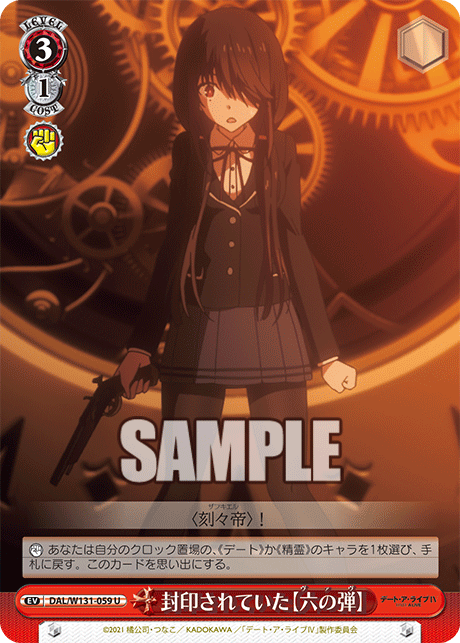
DAL/W131-037RR 身も心も捧げて 狂三 (center)
DAL/W131-059U 封印されていた【六の弾】(right)
For Kurumi, I’d argue that any DAL player who has looked into the series in the game would argue has probably received the most support in the series, especially if you consider her Date A Bullet cards. Kurumi’s playstyle was always a strange mix between her two colour identities of yellow or red. Predominantly, her standby variant has usually been more popular than her other version. As for this set, Kurumi received a new combo that is rather generic, but it pairs perfectly with standby to mill targets while retaining hand. As for the new finisher, it’s modular and heavily depends on the state of the game and your field. It is a bit reminiscent of the old original Kurumi finisher from the first set, but the fact that it can stand itself early at level two gives you a bit more power should it come out early and last for several turns.
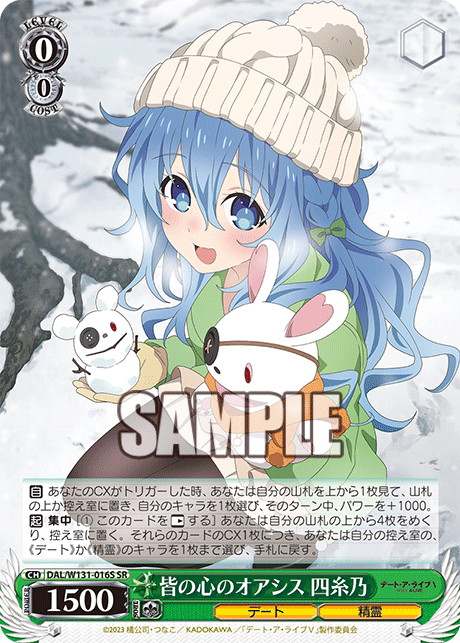
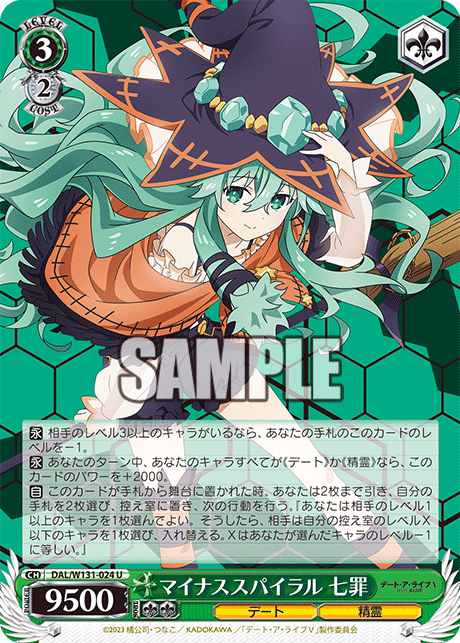
Yoshino and Natsumi return with their common pairing, both working in tandem with bar triggers. Yoshino and Natsumi, I’d argue, received more parallel upgrades if anything. As evidenced from above, there is now a new brainstorm for Yoshino. However, if you wish the old ones such as the old Natsumi brainstorm, go ahead. There is no particular synergy that requires any of the new cards to be played together. There are some nice notable utility profiles that will aid the deck; many of which are very helpful in transforming added bars or extra hand into other cards. Most notably, the pairing did receive their first off-finisher with 3/2 Yoshino.
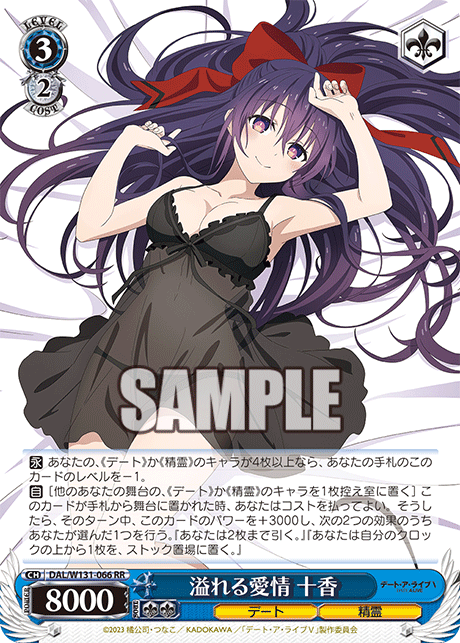
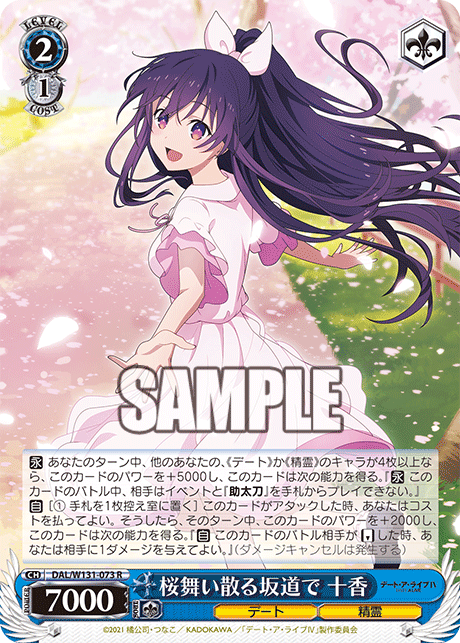
Interestingly enough, Tohka did not receive a new combo whatsoever. All her cards are essentially utility pieces and profiles. Tohka received even more early play cards and level threes, cards that aren’t particularly helpful for her old eight book deck. With her old deck, it felt as if the biggest problem was stock generation in terms of additional advantage. She did receive a stock from hand card which may help with mitigating those problems slightly. The set introduces a new mechanic for Tohka, but I’d think of it as a small one-off thing for now until they concretely make it consistent. Tohka sometimes sacrifices other cards to perform effects as evidenced by the early play above and her new RR Zero Two profile. It’s a tad odd, but I guess that may be a direction where Bushiroad is heading with her design maybe. Tohka also received a rare level two off-finisher.
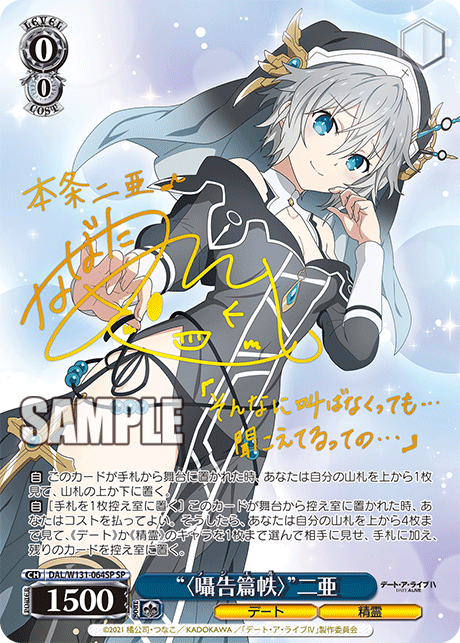
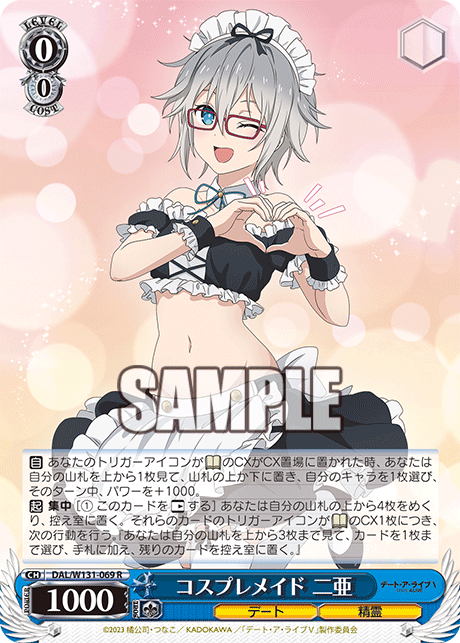
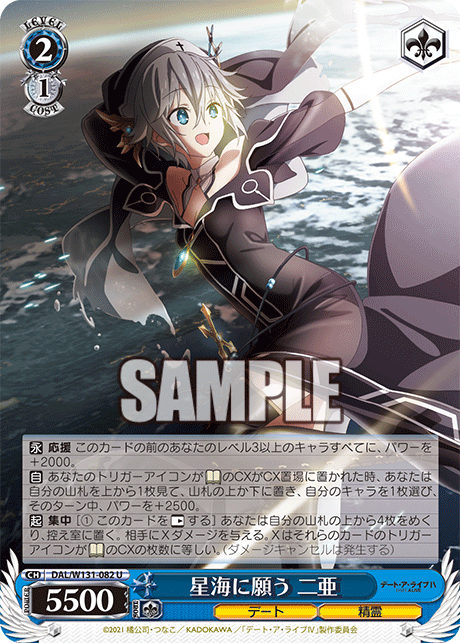
DAL/W131-069R コスプレメイド 二亜 (center)
DAL/W131-082U 星海に願う 二亜 (right)
Tohka isn’t exactly without support. With the release of Nia’s debut in the game, Nia seems to be based around eight book synergies. She has an exclusive book brainstorm, and given that one of Tohka’s old synergies is based around eight book, there is a synergy here where you can pair the two together. Nia receives quite a wealthy load of cards and profiles, ranging from an original Chiyuri without the level one restriction and multiple off-finishers.
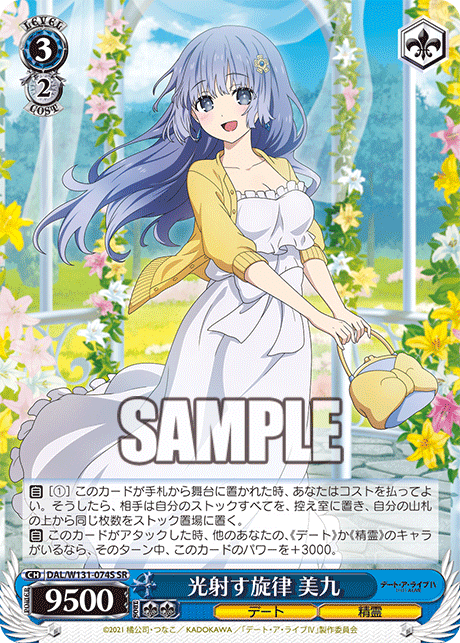
This can’t be said for some other members of the cast. If you’re a fan of Miku, you’re a little bit out of luck here as Bushiroad has once again printed only side cards and additional utility profiles for Miku. Notably, Miku carries a new stock flush profile (not stock shuffle). She gains a variety of profiles to work with for the early and mid-game. Despite debuting in the first series to feature Date A Live, for a total of five sets now, Miku continues to lack any form of finishing power whatsoever.
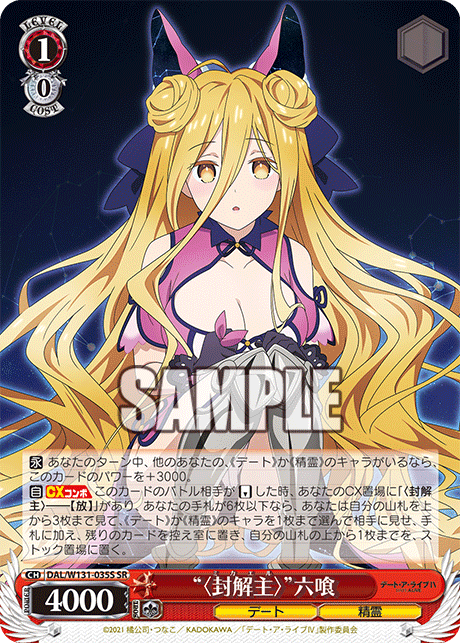
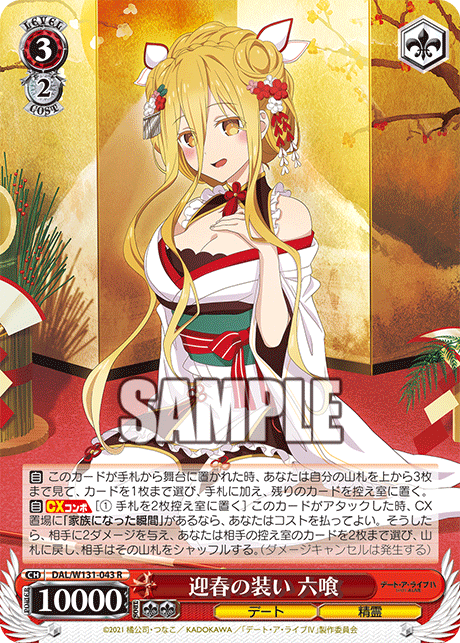
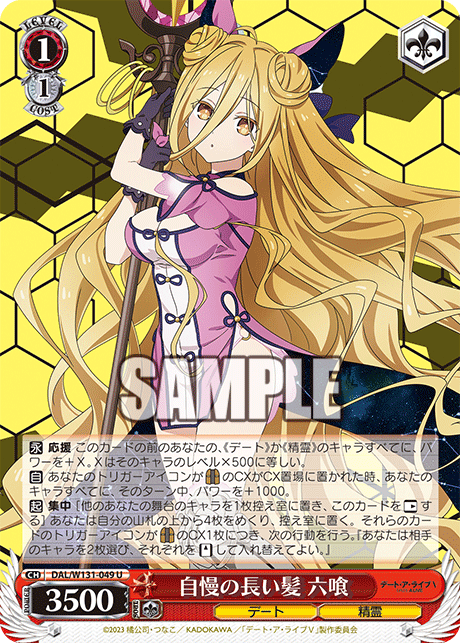
DAL/W131-043R 迎春の装い 六喰 (center)
DAL/W131-049U 自慢の長い髪 六喰 (right)
While being briefly showcased in the last Dengeki Bunko booster, Mukuro makes her official debut in this set. Mukuro contains a fully encased package for herself and shares a door climax synergy. All-in-all, Mukuro’s package looks great, but similar to the Yamai twins and their debut, Mukuro is lacking cards to bring her up to speed to generate a modern deck profile. She has some utility pieces and everything, but not enough to give her any form of flexibility. As this is the first time a door synergy has been seen in Date A Live, Mukuro also lacks any direct pairing partner.
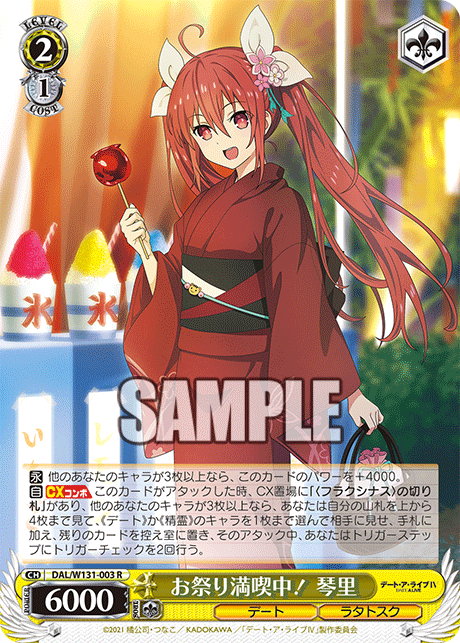
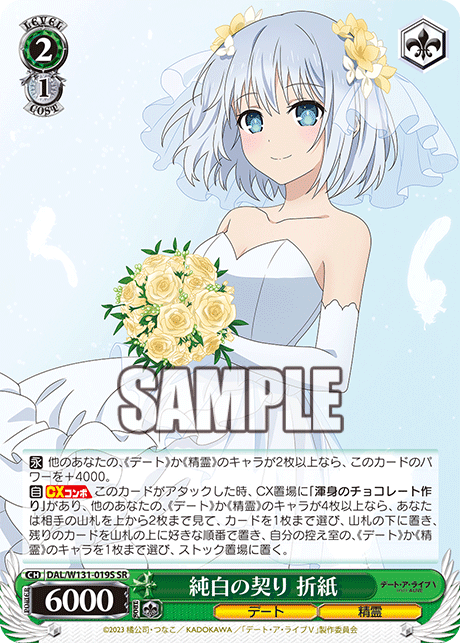
Both Kotori and Origami received similar roles this time around. Both received two new level two combos, both of which can’t be early played whatsoever. Neither of these combos are finishing combos either as they just generate more advantage. Outside of this, both just received even more utility cards.
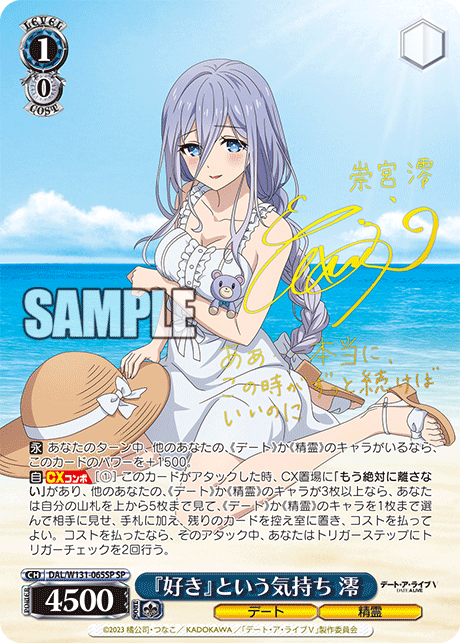
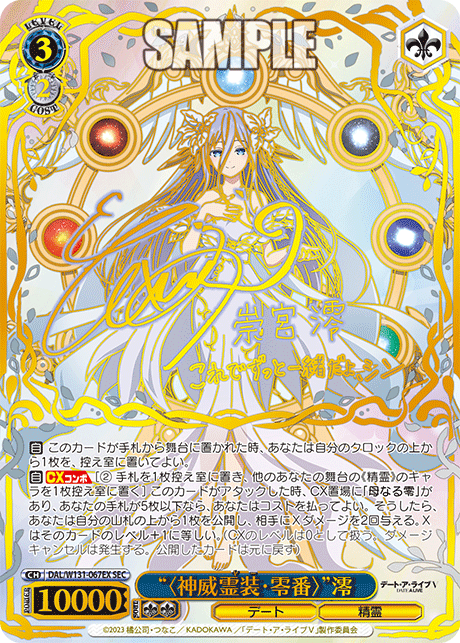
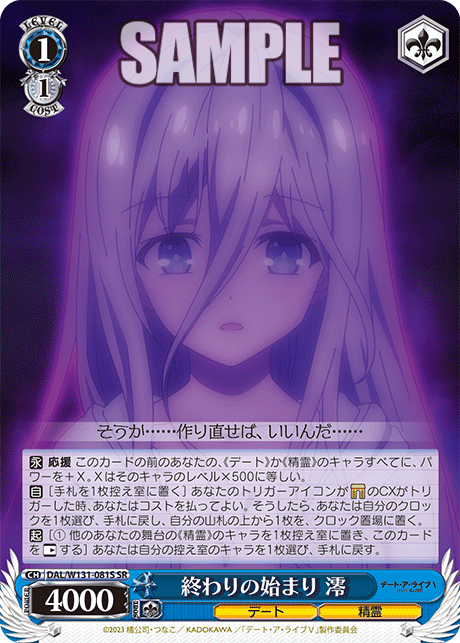
DAL/W131-067EX-SEC “〈神威霊装・零番〉”澪 (center)
DAL/W131-081S-SR 終わりの始まり 澪 (right)
And just before the end, we have Mio, a character who also fully debuted in this set compared to her first appearance in Dengeki Bunko. Mio has received her second finisher (compared to Miku who hasn’t even received her first). Mio debuts with her own early game combo and several utility cards to facilitate her game plan. Furthermore, she shares a new arc trigger synergy that seems to pair well with a singular Shidou card in this new set.
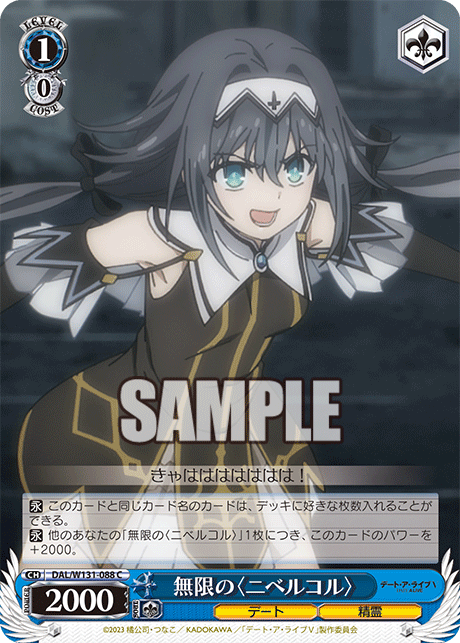
Lastly, if you are a fan of swarm decks, you’re in luck as Nicolbele is back and reprinted. That means that if you missed out on the Dengeki Bunko cards, you can just purchase them now or again.
Overall, I’m slightly disappointed with this set in comparison to the releases of the other Date A Live sets. Similar to the past, certain characters are given much more support than others such as the case with Kurumi and Tohka. Many of the cards in this set can be seen as sidegrades to the previous releases. In a sense, this is nice since you can reuse previous strategies with some potential upgrades. On the flipside, outside of Kurumi and Tohka, many of the previous synergies did not receive cards that they would have greatly improved their gameplay experiences. Support does not fare equally, even among the new cast of characters debuting in this series. And this has been a troubling and recurring problem, especially among fans of the series. In terms of direct support with itself, this booster carries several generic gameplans; none of which are especially exciting. There is no inherent named strategy or references that links cards together outside of the previously designed shells. If you were to buy this product standalone, you would simply mix and match whatever you’d like. One positive I will mention is the plethora of new utility profiles present in the set, giving better overall filter power to the series as a whole, but that is to be expected with every new set. Additionally, the reprint of older cards will help those who missed the opportunity or would like the new arts printed for their cards in their new box topper rarity.